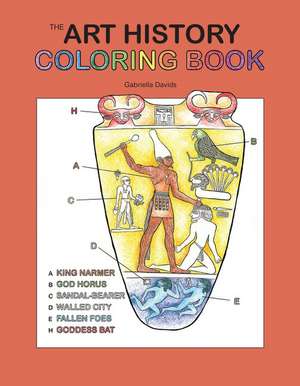The Art History Coloring Book: A Coloring Book: Coloring Concepts
Autor Coloring Concepts Inc.en Paperback – 23 aug 2021
The Art History Coloring Book tells the story behind some of the most significant artistic creations from around the world. Whether you’re studying for the Art History AP exam, an afficionado of great art, or want to put your own coloring spin on some of the greatest works ever created by masters such as Michelangelo, Monet, and Picasso, this engaging coloring book has something for everyone.
Each work of art is accompanied by educational text that uses Coloring Concepts Inc.’s unique methodology for kinesthetic learning, which involves physically interacting with a subject to facilitate understanding. Kinesthetic techniques are used in combination with visual and/or auditory study techniques, producing multi-sensory learning.
The Art History Coloring Book comes complete with a Table of Contents, Index, Glossary and References, and a full-color photo insert.
Preț: 174.41 lei
Nou
Puncte Express: 262
Preț estimativ în valută:
33.39€ • 34.84$ • 27.99£
33.39€ • 34.84$ • 27.99£
Carte disponibilă
Livrare economică 19 februarie-05 martie
Preluare comenzi: 021 569.72.76
Specificații
ISBN-13: 9780063009745
ISBN-10: 0063009749
Pagini: 328
Dimensiuni: 216 x 279 x 27 mm
Greutate: 1.23 kg
Editura: HarperCollins Publishers
Colecția Collins Reference
Seria Coloring Concepts
ISBN-10: 0063009749
Pagini: 328
Dimensiuni: 216 x 279 x 27 mm
Greutate: 1.23 kg
Editura: HarperCollins Publishers
Colecția Collins Reference
Seria Coloring Concepts
Notă biografică
Coloring Concepts Inc. (?CCI?), a California Corporation, has been producing science-based educational coloring books since 1982 for the higher educational market. Over six million books have been sold in the U.S. and millions more around the world. They have been translated into thirteen languages. CCI's products include the following coloring books: Anatomy, Human Brain, Human Evolution, Biology, Zoology, Botany, Microbiology, and Marine Biology. The books are used by students in higher education, health and science professionals, homeschoolers, and more recently by the lifelong learner.





